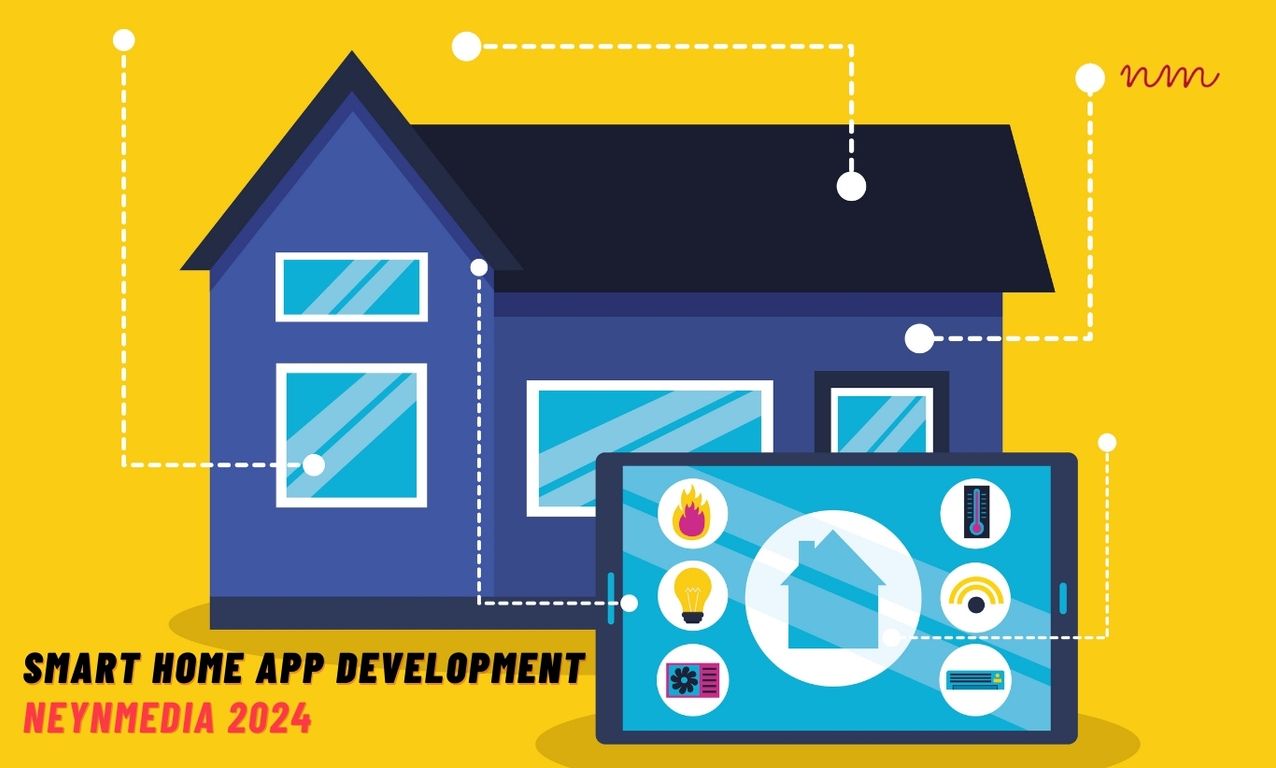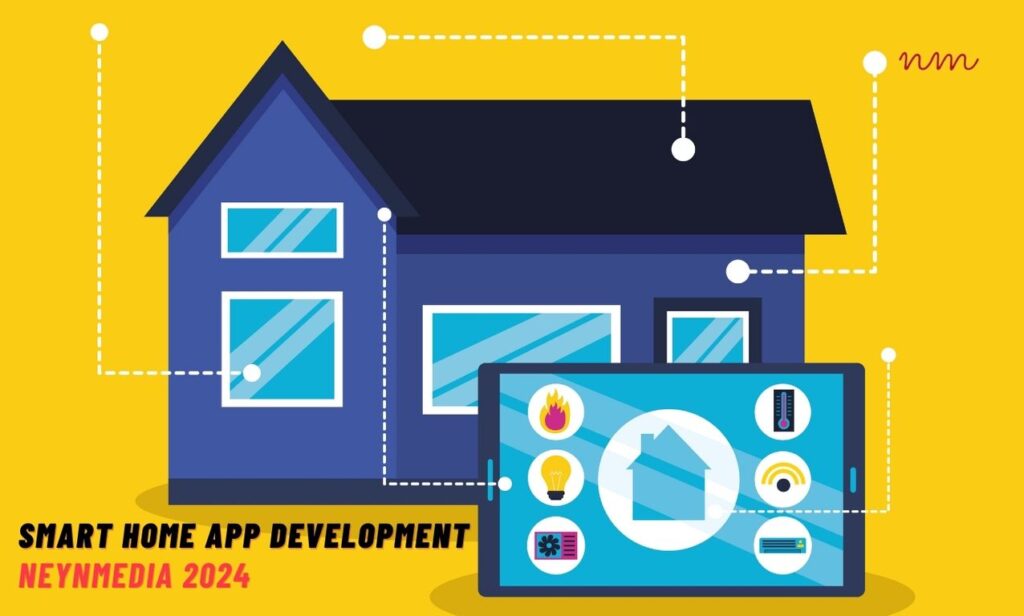Smart home app development has taken the world by storm, allowing homeowners to control their homes from the palm of their hands. With a few taps on their smartphones, they can adjust lighting, lock doors, and even control their thermostats. I think this is an amazing advancement in technology that makes our lives easier and more convenient.
In this blog article, I’ll share some strategies for smart home app development that I’ve learned over the years. I’ll cover everything from choosing the right platform to designing a user-friendly interface. I’ll also provide some tips for promoting your app and getting it into the hands of users.
I’ve been writing about smart home technology for over 10 years, and I’ve seen firsthand how this industry has evolved. I’ve seen the rise of voice assistants, the integration of AI, and the development of new and innovative smart home devices. I’m excited to share my knowledge and experience with you and help you create a smart home app that’s successful and user-friendly.
Smart Home App Development: The Ultimate Guide
In the era of the Internet of Things (IoT), smart home technology has become an integral part of modern living. Smart home apps, in particular, have revolutionized the way we interact with our homes, providing convenience, security, and energy efficiency at our fingertips.
1. Understanding Smart Home Apps
Smart home apps are software applications that allow users to control and monitor their smart home devices from anywhere, using a smartphone, tablet, or computer. These apps typically provide a user-friendly interface that enables users to control lights, thermostats, security systems, and other smart devices with just a few taps.
2. Benefits of Smart Home Apps
Smart home apps offer a wide range of benefits, including:
- Convenience: Smart home apps allow users to control their home devices from anywhere, making it easy to adjust lighting, temperature, and security settings with just a few taps.
- Energy Efficiency: Smart home apps can help users save energy by allowing them to monitor their energy usage and make adjustments accordingly.
- Security: Smart home apps can provide peace of mind by allowing users to monitor their home’s security system and receive alerts if there is a break-in or other security breach.
- Customization: Smart home apps can be customized to meet the individual needs of users, allowing them to create personalized routines and settings.
3. Key Features of a Smart Home App
Effective smart home apps typically include the following key features:
- User-friendly Interface: The app should have a simple and intuitive interface that is easy to navigate and use, even for users who are not tech-savvy.
- Device Compatibility: The app should be compatible with a wide range of smart home devices, including lights, thermostats, security systems, and more.
- Remote Control: The app should allow users to control their smart home devices from anywhere, using a smartphone, tablet, or computer.
- Scheduling and Automation: The app should allow users to schedule tasks and create automated routines, such as turning on the lights at sunset or adjusting the thermostat when they leave the house.
- Security and Privacy: The app should include robust security features to protect user data and privacy.
4. Developing a Smart Home App
Developing a smart home app requires expertise in various technologies, including mobile app development, IoT connectivity, and cloud computing. It is important to follow a structured development process that includes the following steps:
- Ideation and Concept: Define the concept and scope of the smart home app, including its key features and target audience.
- Market Research: Conduct thorough market research to understand the competitive landscape and identify potential opportunities.
- Prototyping and Design: Create a prototype of the app to test its functionality and user experience. Design the app’s user interface and ensure that it is intuitive and easy to use.
- Development: Develop the app using appropriate programming languages and frameworks. Ensure that the app is compatible with a wide range of smart home devices.
- Testing and Deployment: Thoroughly test the app to ensure that it is bug-free and meets all functional requirements. Deploy the app to app stores and make it available to users.
5. Conclusion
Smart home apps are transforming the way we interact with our homes, offering convenience, security, and energy efficiency. By understanding the benefits, key features, and development process of smart home apps, you can create innovative solutions that meet the needs of modern homeowners.

FAQs about smart home app development
What are the key features of a smart home app?
Smart home apps typically offer a range of features that allow users to control and monitor their smart home devices. These features may include:
- Remote control of smart devices, such as lights, thermostats, and door locks
- Scheduling and automation of smart devices
- Monitoring of smart devices, such as security cameras and motion sensors
- Notifications and alerts from smart devices
- Integration with other smart home platforms and devices
What are the benefits of using a smart home app?
Smart home apps offer a number of benefits to users, including:
- Convenience: Smart home apps allow users to control and monitor their smart home devices from anywhere with an internet connection.
- Energy savings: Smart home apps can help users save energy by automating the control of their smart devices.
- Security: Smart home apps can help users improve the security of their homes by allowing them to monitor their smart devices and receive alerts if there is any suspicious activity.
- Peace of mind: Smart home apps can give users peace of mind by allowing them to check on their homes remotely and make sure that everything is okay.
What are the challenges of developing a smart home app?
There are a number of challenges associated with developing a smart home app, including:
- Complexity: Smart home apps can be complex to develop, as they need to integrate with a variety of smart home devices and platforms.
- Security: Smart home apps need to be secure, as they have access to sensitive data about users’ homes.
- Interoperability: Smart home apps need to be interoperable with a variety of smart home devices and platforms, in order to provide users with a seamless experience.
- User experience: Smart home apps need to be easy to use and intuitive, in order to appeal to a wide range of users.
What are the latest trends in smart home app development?
Some of the latest trends in smart home app development include:
- Voice control: Smart home apps are increasingly being integrated with voice control platforms, such as Amazon Alexa and Google Assistant.
- Artificial intelligence: Smart home apps are also beginning to incorporate artificial intelligence (AI), which can be used to learn users’ habits and preferences and automate tasks accordingly.
- Integration with other smart home platforms: Smart home apps are also being integrated with other smart home platforms, such as Samsung SmartThings and Apple HomeKit, in order to provide users with a more comprehensive smart home experience.
What is the future of smart home app development?
The future of smart home app development is bright. As more and more people adopt smart home devices, the demand for smart home apps will continue to grow. Smart home apps will become more sophisticated and integrated, and they will play an increasingly important role in our lives.
Recent Post:



